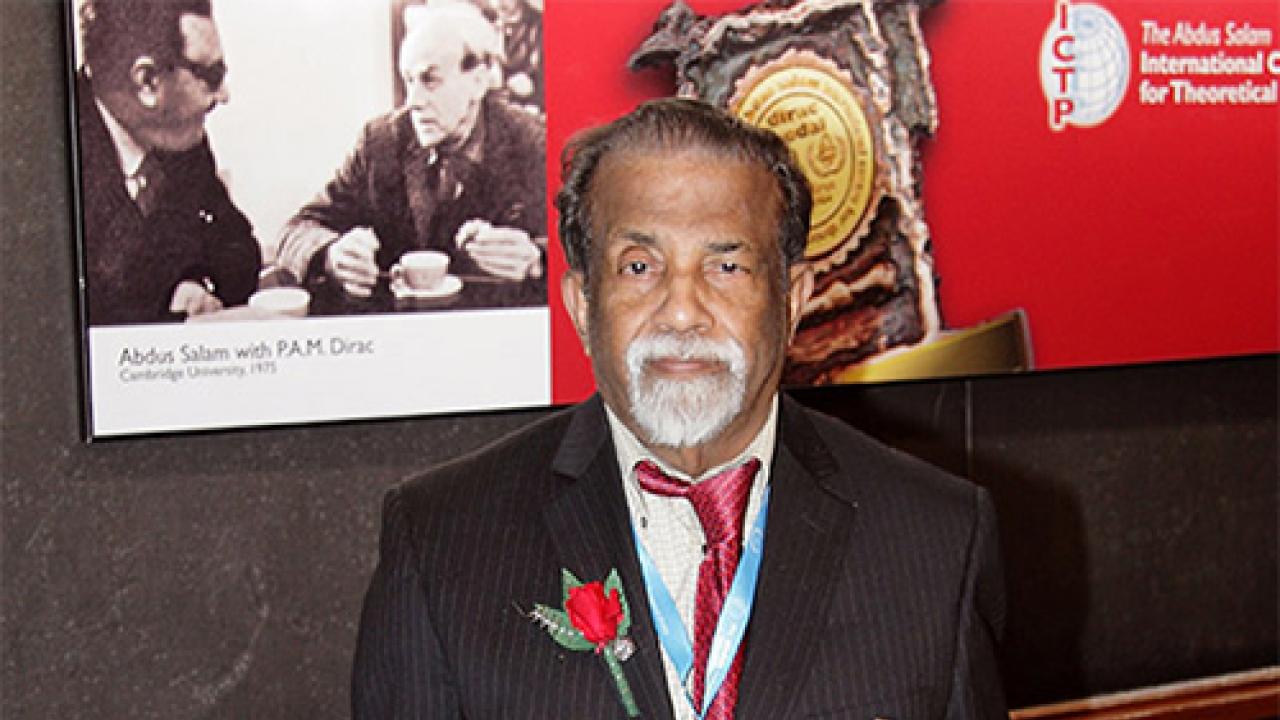
Theoretical physicist E. C. George Sudarshan died of natural causes on 14 May. He was the recipient, together with Nicola Cabibbo, of ICTP's 2010 Dirac Medal, for fundamental contributions to the understanding of weak interactions and other aspects of theoretical physics. He discovered (with Robert Marshak) the V-A theory of weak interactions, which opened the way to the full description of the unified electroweak theory. The V-A theory was crucial to the work on the unification of the weak and electromagnetic interactions by Steven Weinberg, Abdus Salam and Sheldon Glashow, for which the three received the 1979 Nobel Prize in Physics.
Sudarshan also made innovative discoveries in the field of quantum optics, including the Optical Equivalence Theorem, which provides the foundation upon which the investigations of the manifestly quantum or non-classical character of the electromagnetic field are based.
Ennackal Chandy George Sudarshan was born in Kottayam, Kerala, India on 16 September 1931. He received his PhD degree from the University of Rochester in 1958. From there, he went to Harvard University to work with Julian Schwinger as a postdoctoral fellow. After serving on the faculties of the University of Rochester and Syracuse University, he settled at the University of Texas- Austin, where he remained until 2016.
Related link:
Books by George Sudarshan in ICTP's Marie Curie Library
















